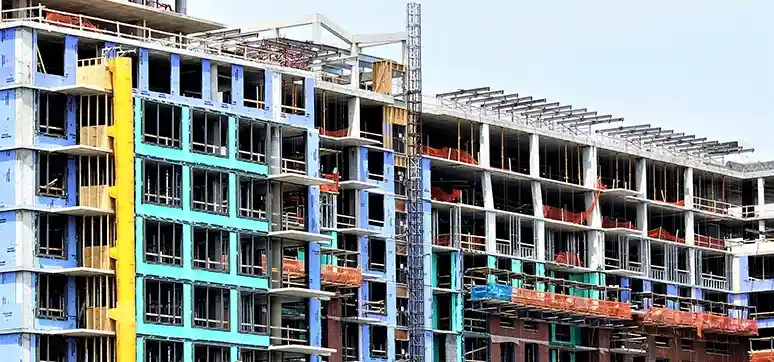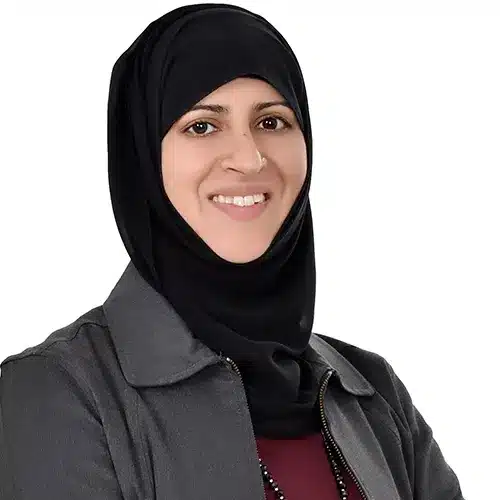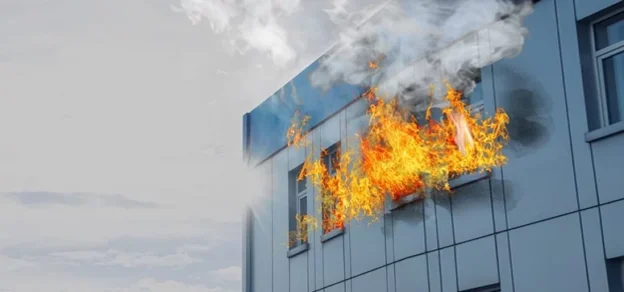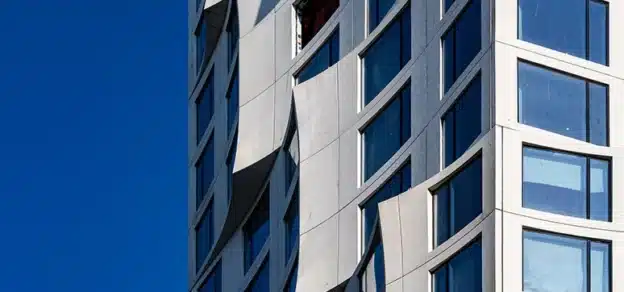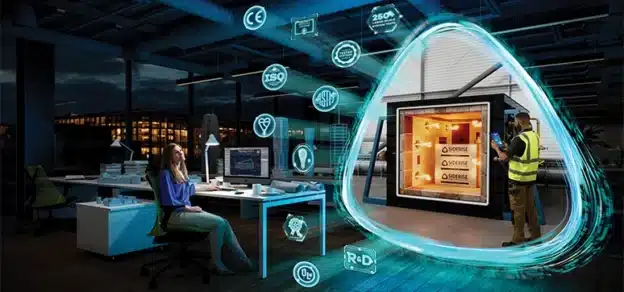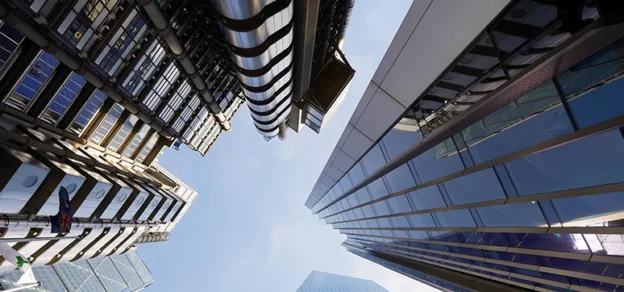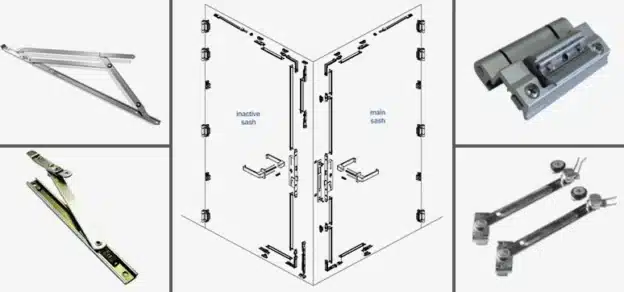The testing of exterior wall assemblies with combustible components such as plastics and foam plastic insulation is an important consideration in fire safety design. International building codes generally require full-scale testing to confirm vertical and lateral flame spread in buildings that will be limited to the acceptance criteria in the applicable test methods. Standards referenced by the building codes have historically required wall assemblies to be tested based on their intended installation. Ideally, components of the tested assembly must match the design identically as constructed – with no differences in materials, components, or configuration of materials.
As exterior wall assemblies become increasingly complex due to the demands of energy efficiency as well as resilience in buildings, there are challenges posed to fullscale testing of assemblies when a variation at construction occurs (Greenwald & Banks, 2021). Such variations may be due to unique field conditions arising during construction, unforeseen design errors, or even supply chain issues impacting the availability of materials. These variances in the exterior wall assembly construction are likely to result in the delay of construction approvals and issuance of occupancy certificates if the differences cannot be reconciled or demonstrated equivalent to the approved design.

When replacing or substituting a component in a wall assembly that has been successfully tested with baseline components, the alternate components must be analyzed both individually and as a system. Each component can have a different effect due to the proposed changes and therefore must be evaluated. It has been the industry practice to rely on fire protection engineering evaluations or engineering judgments based on sound technical justification to resolve variances in exterior wall assemblies between the design specified in the approved documents and the final construction.
However, in some instances, such engineering evaluations have lacked sufficient technical justification to demonstrate compliance with required acceptance criteria, or attempt to verify compliance based on data from bench-scale tests rather than reference full-scale exterior wall assembly fire tests such as NFA 285 Standard Fire Test Method for Evaluation of Fire Propagation Characteristics of Exterior Wall Assemblies Containing Combustible Components, BS 8414 Fire performance of external cladding systems, and CAN/ULC S134 Standard Method of Fire Test of Exterior Wall Assemblies.
This has fueled a need to provide guidelines for developing acceptable engineering-based analyses demonstrating compliance with applicable building codes and fire test tests.
Changes to The International Building Code

Section 1402 of the International Building Code (IBC) requires exterior wall assemblies with combustible components to be tested for vertical and lateral flame propagation and comply with the acceptance criteria of NFPA 285 (International Building Code, 2021).
During the 2021 Group A Code Development Cycle, changes to the IBC were adopted that will permit an approved analysis (based on an assembly or condition tested in accordance with and meeting the acceptance criteria of NFPA 285) to be an approved method of demonstrating compliance with the code requirements for limiting vertical and lateral flame spread. This code change, which will appear in the 2024 edition of the IBC, effectively allows analyses of deviations in construction or materials from a successful NFPA 285 test using accepted fire science and fire protection engineering principles to support approval of the assembly as modified.
The analyses must consider the influences that the deviations will have on the performance of the tested assembly and determine that the deviations will not significantly alter the conclusions drawn based on the full-scale results (2022 Group “A” Public Comment Agenda, 2021).
The code change is clear that approved analysis reports must be based on an assembly or condition tested in accordance with and meeting the acceptance criteria of NFPA 285 and cannot rely solely on data from bench-scale test methods. The challenge of providing confidence to building and fire code officials and other authorities having jurisdiction over the accuracy of the technical justification, however, remains.
To date, applicable codes and reference standards have been silent on establishing guidelines and accepted practices for evaluating variations such as the substitution of one material for another material, differences in thickness and density of a specific wall assembly component, and variances in fire performance characteristics. Changes proposed in the next edition of NFPA 285 aim to provide the necessary guidance.
Proposed Changes to The NFPA 285 Standard
Proposed changes in the 2023 edition of NFPA 285 include Annex B, Guide for Extensions of Results from Assemblies that Meeting NFPA 285 Test Requirements. This annex covers extensions of compliant test results obtained from NFPA 285 tests to wall assemblies that differ from a tested wall assembly in materials, components, or configurations. The purpose of the annex is to provide guidance to qualified engineers and design professionals when performing a design or developing an engineering analysis/ judgment on NFPA 285-based wall assemblies and is based on engineering principles and testing experience.
The proposed annex will be discussed at the upcoming 2022 NFPA Technical meeting in June and subsequently balloted to the NFPA Technical Committee on Fire Tests for approval. The extension of the data and results in the annex currently apply only to the fire test exposure and configurations described in NFPA 285 and may not necessarily be applied to other full-scale test exposures and configurations described in other standards such as BS 8414 or CAN/ ULC S134.
With respect to the exterior wall assembly, the annex covers the analysis of components, including but not limited to base wall alternatives, floor line fire stops, exterior sheathing, weather-resistive barriers, air cavities, exterior insulation, and exterior cladding, attachment systems, and the window perimeter.
 The proposed annex provides specific guidance on acceptability in changes in brands or types of insulation, the configuration of air cavities, and what brands/products can or cannot be changed. While this article does not outline all such guidance included in the proposed annex, a number of examples are presented here to provide a sense of the provisions intended to be included in the revised standard. For instance, if the base wall assembly is tested without any insulation, then the cavity can remain empty or contain insulation such as fiberglass or mineral wool. But if the base wall assembly is tested with mineral wool insulation, then the cavity must contain mineral wool insulation.
The proposed annex provides specific guidance on acceptability in changes in brands or types of insulation, the configuration of air cavities, and what brands/products can or cannot be changed. While this article does not outline all such guidance included in the proposed annex, a number of examples are presented here to provide a sense of the provisions intended to be included in the revised standard. For instance, if the base wall assembly is tested without any insulation, then the cavity can remain empty or contain insulation such as fiberglass or mineral wool. But if the base wall assembly is tested with mineral wool insulation, then the cavity must contain mineral wool insulation.
Depending on the component, the proposed annex also qualifies materials of greater or lesser thickness and/ or density based on whether minimum or maximum thicknesses and densities were tested in the baseline assembly. For instance, testing the maximum thickness and density for EPS and XPS insulation allows for lesser density and thickness to be installed. An air cavity that is lesser in thickness than what was tested is also permitted.
A similar principle is applied to fire characteristics such as ignition time, peak and average heat release rates, total heat released, and effective heat of combustion. For NFPA 285 analyses, products with the highest fuel content are typically considered the worst case. In the case of weather-resistive barriers (WRBs), testing with a specific WRB allows for WRBs with lower or lesser fire characteristics to be used in lieu of the specified tested WRB.
Similarly, successful NFPA 285 testing with aluminum composite material (ACM) cladding can potentially allow for claddings that have better fire performance or that have facers with higher melting points than metal composite material (MCM)/ ACM, such as uninsulated metal panels of aluminum or copper, non-combustible fiber cement, porcelain, mortared thin brick or another masonry, and materials of similar no combustibility. The proposed annex permits cone calorimeter tests in accordance with ASTM E1354 to determine the fire characteristics and outlines for which exterior wall components this approach is acceptable, such as WRBs and finish coats.
The proposed annex does not provide solutions for all variations to a baseline NFPA 285 tested assembly. Multiple changes can have a different cumulative effect than that of individual changes to be applied separately, and it may not be possible to analyze every configuration or change to a tested wall assembly. Where the engineering analysis/ judgment does not support the variation, it is recommended that an NFPA 285 test be conducted. Provisions of Annex B indicate that NFPA 285 testing with MCMs/ACMs does not allow for substitution with other combustible claddings.
Composite (non-MCM) panels must be tested per NPFA 285 when modified or not previously tested as part of the assembly, even if the exterior façade is noncombustible. Changes to the location or type of firestop or fire-blocking in a tested assembly are not recommended to be permitted. If a successful NFPA 285 test does not contain firestops of fire-blocking in its construction, the addition of firestops or fire blocking is not recommended to be permitted without resting.
Other examples include exterior insulation and finish systems (EIFS), which must also be tested and built with materials from the same manufacturer. EIFS components from different manufacturers cannot be mixed. A final example is a use of fiber-reinforced plastic (FRP) as an exterior veneer, which requires an NFPA 285 test of the actual project wall construction. Extensions or substitutions of these components are not permitted.
SUMMARY
Approved analysis to extend NFPA 285 test results is a practical means of demonstrating compliance with applicable building code requirements for limiting vertical and lateral flame spread where construction conditions present challenges. Recent changes to the International Building Code and proposed changes to NFPA 285 will codify engineering-based analysis and judgments and provide a means for meeting the demands for energy efficiency and other performance requirements without sacrificing fire safety in the built environment.
REFERENCES
• (2021). 2022 Group A Public Comment Agenda. International Code Council.
• Greenwald, J. H., & Banks, E. W. (2021, March). NFPA 285 – Extending Data with Comparative Engineering Analysis. IIBEC Interface, pp. 20-23.
• International Building Code. (2021). International Code Council.
